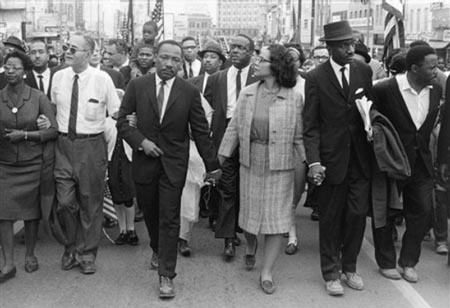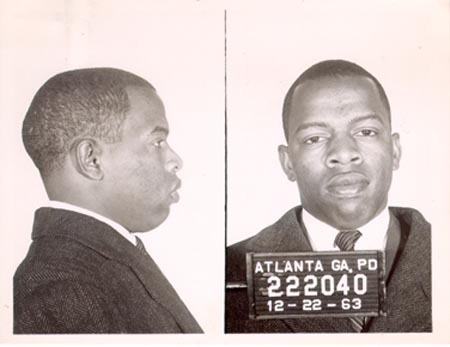The
Bronx Museum presents two Civil Rights exhibitions that speak to the history and legacy of the Movement:
Road to Freedom: Photographs of the Civil Rights Movement, 1956–1968 and After 1968: Contemporary Artists and the Civil Rights Legacy, on view through August 11, 2010. During the span of 12 years, a series of events, later hailed as the Civil Rights Movement, would forever change the social and political course of America. Since March 28 through August 11, 2010, The Bronx Museum of the Arts is presenting two sweeping exhibitions that chronicle both these pivotal moments in the nation’s history and its legacy surveyed through the works of young African-American artists.
The first,
Road to Freedom: Photographs of the Civil Rights Movement, 1956–1968, will feature 150 vintage photographs; images that not only exposed rampant acts of discrimination in America’s past, but also revealed shining glimpses of equality and unity amongst its citizens.
Road to Freedom is the most comprehensive collection of photographic prints and related artifacts ever devoted to the subject, and was organized by the
High Museum of Art in Atlanta to commemorate the 40th anniversary of Dr. Martin Luther King, Jr.’s assassination.

Road to Freedom includes images by renowned photographers such as
Bob Adelman, Bruce Davidson, Danny Lyon and Charles Moore; its oeuvre beginning with Rosa Parks’ refusal to surrender her seat aboard a Montgomery, Alabama bus in 1956 and culminating with the assassination of Dr. King in 1968. The exhibition also documents key events such as the Freedom Rides in 1961; the March on Washington in 1963; the hosings at the Kelly Ingram Park in Birmingham, Alabama the same year; and the Selma-to-Montgomery Voting March in 1965, which led to the signing of the Voting Rights Act by President Lyndon Johnson months later. These images highlight the heroes and leaders of the civil rights movement, figures such as Dr. King; Rosa Parks; Stokely Carmichael, leader of the Student Nonviolent Coordinating Committee (SNCC); voting rights activist Fannie Lou Hamer; John Lewis, chairman of SNCC who played a key role in ending segregation; and lesser-known individuals, who valiantly sacrificed their lives for liberty.
“
Road to Freedom demonstrates the powerful impact of photography and how instrumental the documentation of Civil Rights events was in achieving its success,” says
Holly Block, executive director of The Bronx Museum of the Arts. “The photographs served to enlist supporters, increase awareness of the inequalities faced by African-Americans, raise funds for the cause, and even free those jailed for resisting discrimination.”
As a complement to
Road to Freedom, The Bronx Museum will also present
After 1968: Contemporary Artists and the Civil Rights Legacy. This smaller exhibition includes works from seven African-American, emerging artists and collectives — all born on or after 1968 — who have created new work examining the heritage of the Civil Rights Movement and its affect on the lives of this new generation. They include
Deborah Grant, Leslie Hewitt, Otabenga Jones and Associates, Adam Pendleton, Jefferson Pinder, Nadine Robinson and
Hank Willis Thomas. Using the movement as inspiration, context or critique, these artists address their own personal understanding of race, identity, American violence, and political activism providing new perspectives on and discourse about this critical time in the history of the United States.
The artists’ diverse approaches include Deborah

Grant’s 24 wood panels painted in red, collaged with images from the civil rights movement. By taking these images out of context and juxtaposing them, she creates a dialogue about the images, leading viewers to draw their own conclusions about the events. Hank Willis Thomas takes advertising images portraying African-Americans addressing the tension between commodity and race. Nadine Robinson offers a more personal and autobiographical approach through her sound pieces, emitting musical compositions of both black and white musical culture and often alluding to the 1963 hosings at Kelly Ingram Park by mixing sounds of rushing water with excerpts from protest speeches.
Since debuting at the High Museum of Art in June 2008,
Road to Freedom and After 1968 have traveled to the Smithsonian National Museum of African American History and Culture in Washington, DC, the Field Museum in Chicago, and the Skirball Cultural Center in Los Angeles. The Bronx Museum, the only New York City venue to present these exhibitions, will serve as the final stop. Please visit www.bronxmuseum.org for more information and the latest program schedule.